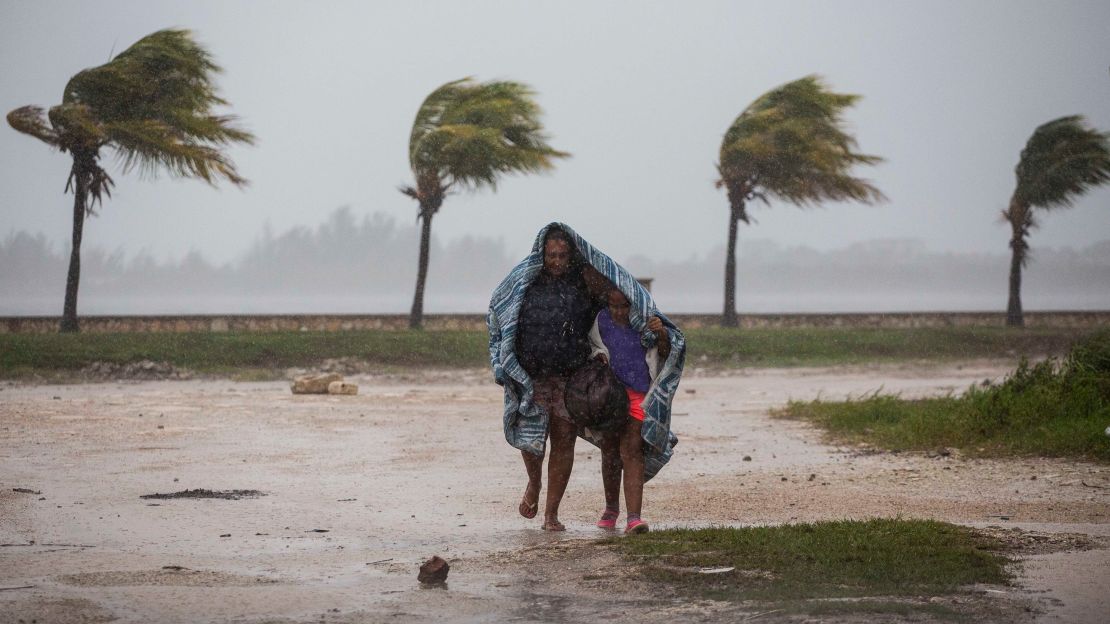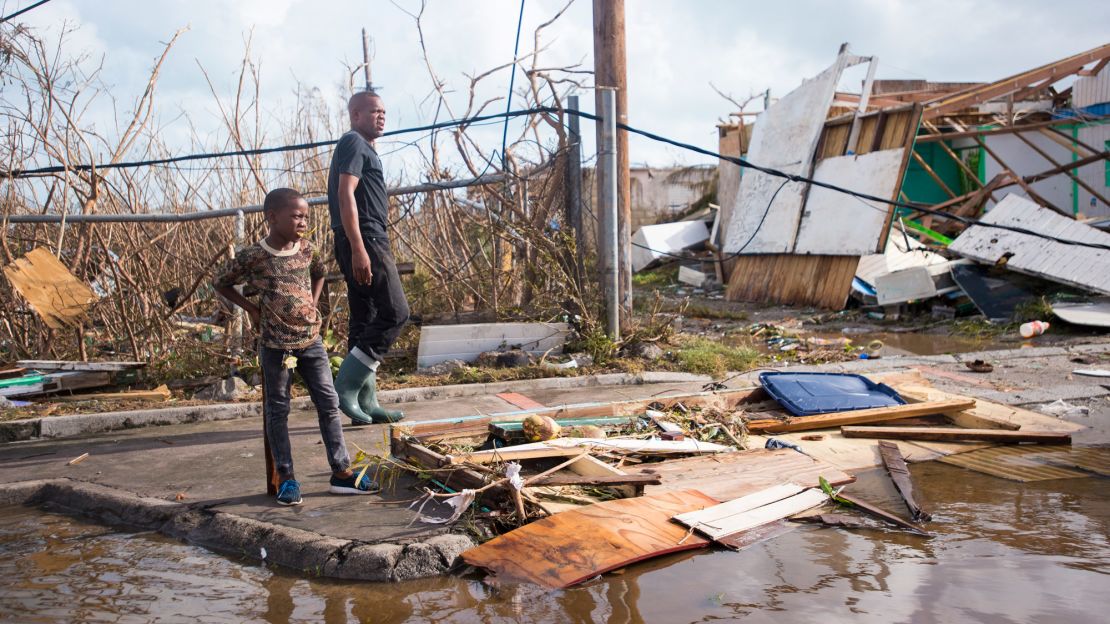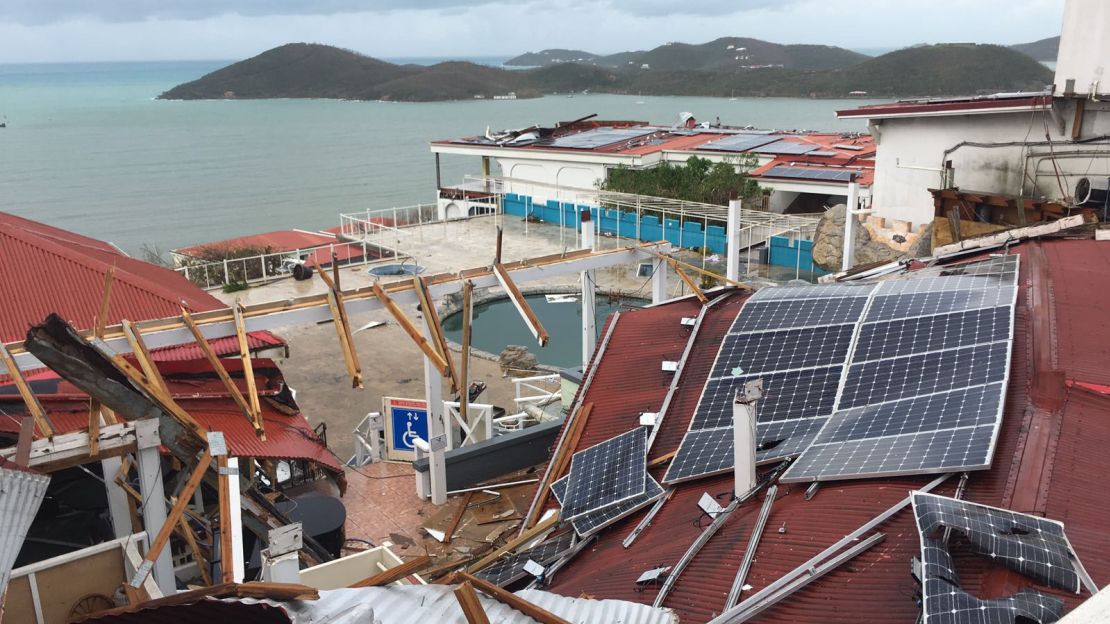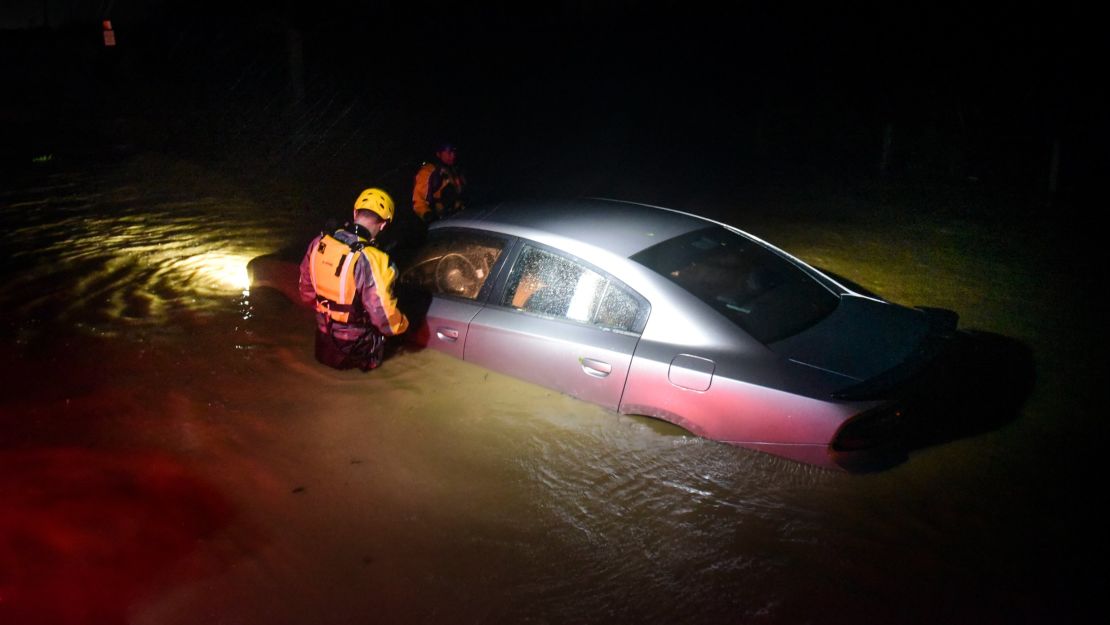Story highlights
NEW: Irma has slowed down as it moves from Cuba toward Florida
NEW: As of 8 p.m. ET Irma continues to be a Category 3 storm, expected to restrengthen before reaching Florida
Packing life-threatening winds, provoking massive storm surge and causing a host of rainfall dangers, Hurricane Irma slammed northern Cuba on Saturday, continuing to plod a path of devastation through the Caribbean en route to the US state of Florida.
A string of small Caribbean islands was left reeling by the massive hurricane, which strengthened to a Category 5 storm as it made landfall overnight in Cuba. It was downgraded late Saturday morning to Category 3 but was expected to regain power.
“Irma is forecast to restrengthen once it moves away from Cuba, and … to remain a powerful hurricane as it approaches Florida,” the US National Hurricane Center said Saturday evening.
In its 8 p.m. ET advisory, the National Hurricane Center reported that Irma had temporarily slowed down, moving toward Florida near 7 mph (11kph). The storm is about 110 miles (175 kilometers) southeast of Key West and is expected to reach the Florida Keys early Sunday. The hurricane is expected to move along or near the southwest coast of Florida Sunday afternoon.
At least 24 people were known to have died in the Caribbean as a result of Irma. Many islands were still assessing the damage, even as they prepared for the arrival of another major storm, Hurricane Jose.
A hurricane warning for Barbuda and Anguilla was downgraded to a tropical storm warning on Saturday morning and later discontinued. Tropical storm warnings remain in place for St. Martin and St. Barts.
By Saturday evening, the enter of Irma lingered near the north coast of Cuba, packing sustained winds near 120 mph (195 kph) with higher gusts. Hurricane-force winds extend outward up to 70 miles (110 kilometers) from the center, and tropical-storm-force winds extend outward up to 195 miles (315 kilometers).
Irma’s blinding rain and powerful winds began pummeling Caibarién, Cuba, late Friday as the outer bands of the massive storm made their entrance, knocking out power in a town that normally would be busy with tourists.
By dawn Saturday, the town’s main street had waves rolling down it, and within hours the whole town was flooded with several feet of water. Roofs could be seen flying off and trees were blown down as the wind gusted and roared. Officials reported a wind gust of 124 mph (200 kph) around midmorning Saturday.
Most people in the coastal area live in one-story homes, putting them at great risk as floodwaters rose to roof level in some places. Residents were overwhelmed by the damage and said recovery will take time.
Many people had left town over the past couple of days, with all foreigners urged to evacuate. Those who remained were prepared, though they knew this was a storm like few had ever experienced, they told CNN.
The Cuban government staged emergency supplies and building equipment ahead of the storm’s arrival, but it could be some time before the extent of the damage is known.

Gusts destroy wind-measuring instrument
As of 8 p.m. ET Saturday, a hurricane warning for Irma remained in place for the Cuban provinces of Camaguey, Ciego de Avila, Sancti Spiritus, Villa Clara, Matanzas, and Havana – as well as for the northwestern Bahamas. According to state-run news organization Granma, there are 14,500 foreign tourists riding out Irma in the resort town of Varadero in the Matanzas province.
Full coverage
Irma struck the archipelago north of Cuba’s Camaguey and Ciego de Avila provinces with gusts so strong they destroyed an instrument used to measure wind, Cuba’s meteorological agency reported.
Hurricane-strength winds later were recorded in the northern half of Camaguey province, the agency said.
As Irma advanced over neighboring Ciego de Avila province, 16- to 23-foot waves (5 to 7 meters) were recorded. As the storm headed westward, the possibility of even bigger waves and greater flooding was high along the northern Cuban coast, including in Havana, the agency said.
Irma was the first Category 5 hurricane to hit Camaguey in 85 years, according to the province’s state media radio station.
Damage was reported in all municipalities in Camaguey, the station said, mostly in the form of torn-off roofs, damage to buildings, downed trees and loss of electricity.
Hurricane Irma tears through Caribbean
Irma’s eye was due to strike part of the Florida Keys on Sunday morning before driving up the state’s southwestern coast by Sunday afternoon, according to the hurricane center.
Forecasters and Florida officials issued dire warnings urging residents in Irma’s path to evacuate immediately. About 6.3 million people in the state had been ordered to leave, officials said.
Devastation left in Irma’s wake
Of the 24 deaths blamed on Irma in the Caribbean, nine were in unspecified French territories, one in Barbuda, one in Anguilla, two in Dutch-administered St. Maarten, four in the British Virgin Islands, four in the US Virgin Islands, and three in Puerto Rico.
The tiny island of Barbuda was perhaps worst hit so far by Irma, with Prime Minister Gaston Browne describing the result as “total devastation.”
“I have never seen any such destruction on a per capita basis compared to what I saw in Barbuda this afternoon,” Browne told CNN on Wednesday.
Antigua, Barbuda’s sister island and home to about 80,000 people, was spared the brunt of the storm. Many residents there have been evacuated ahead of Jose.
St. Martin, an 87-square kilometer island split roughly in half between the French overseas collectivity of St. Martin and St. Maarten, a constituent country of the Netherlands, has suffered property damage and power outages due to Irma.
“There is a sense of dread … utility poles are down everywhere. There is no power and no public water and it appears it may take a long time to restore,” Xaverius van der Hoek, who lives in St. Maarten, told CNN.

Looting broke out on the island, home to about 72,000 people, and security forces were deployed to deal with the problem, French and Dutch authorities said Friday.
Irma caused roughly €1.2 billion ($1.44 billion) of insured damage in the French portion of St. Martin and in St. Barts, French state-owned insurer CCR said Saturday.
“This amount covers damages to homes, vehicles and businesses (including operating losses) that are covered by the natural disaster compensation scheme,” CCR said.
State of emergency declared
Just to the north, Anguilla, a 90-square kilometer island that is among several British overseas territories in the Caribbean, “received the hurricane’s full blast,” according to UK Foreign and Commonwealth Office Minister Alan Duncan.
The US and British Virgin Islands were also pummeled by Irma. Pictures from St. Thomas, the most populated of the US Virgin Islands and a popular tourist destination, showed extensive damage.

“All of us have been affected by Irma and some more than others,” Gus Jaspert, governor of the British Virgin Islands, said in a Facebook statement late Thursday in which he declared a state of emergency for the territory.
“Apart from the structural damage, there have sadly been reports of casualties and fatalities,” he said. “I am truly heartbroken by this news.”

Puerto Rico, an unincorporated US territory, managed to avoid a direct hit from Irma but suffered strong winds and torrential rains. Hundreds of thousands of people remained without power on Friday.
Strong winds and heavy rain also lashed the Dominican Republic, Haiti and the low-lying Turks and Caicos Islands Thursday into Friday. The Turks and Caicos’ capital island of Grand Turk suffered “quite a bit of damage,” including to part of a hospital’s roof, Gov. John Freeman told CNN on Friday.
CNN’s Patrick Oppmann reported from Caibarien and Laura Smith-Spark wrote from London. CNN’s Joe Sterling, Mariano Castillo, Daniel Silva Fernandez and Eva Tapiero contributed to this report.










































































